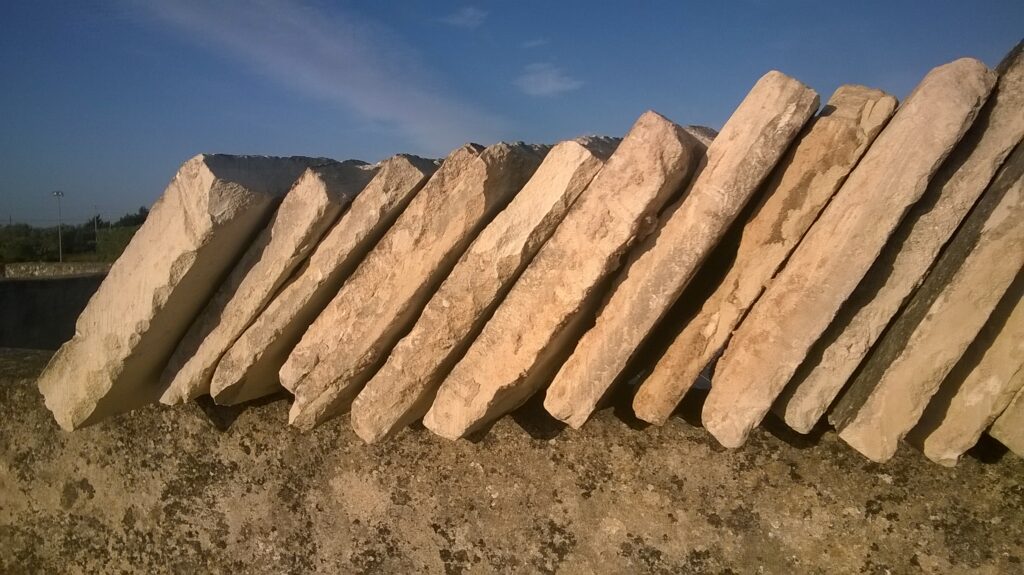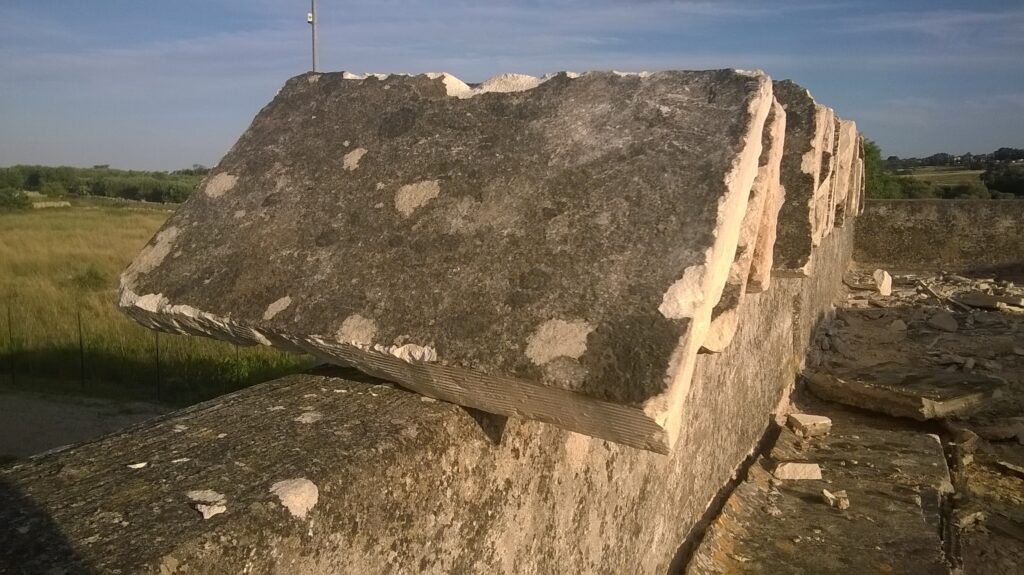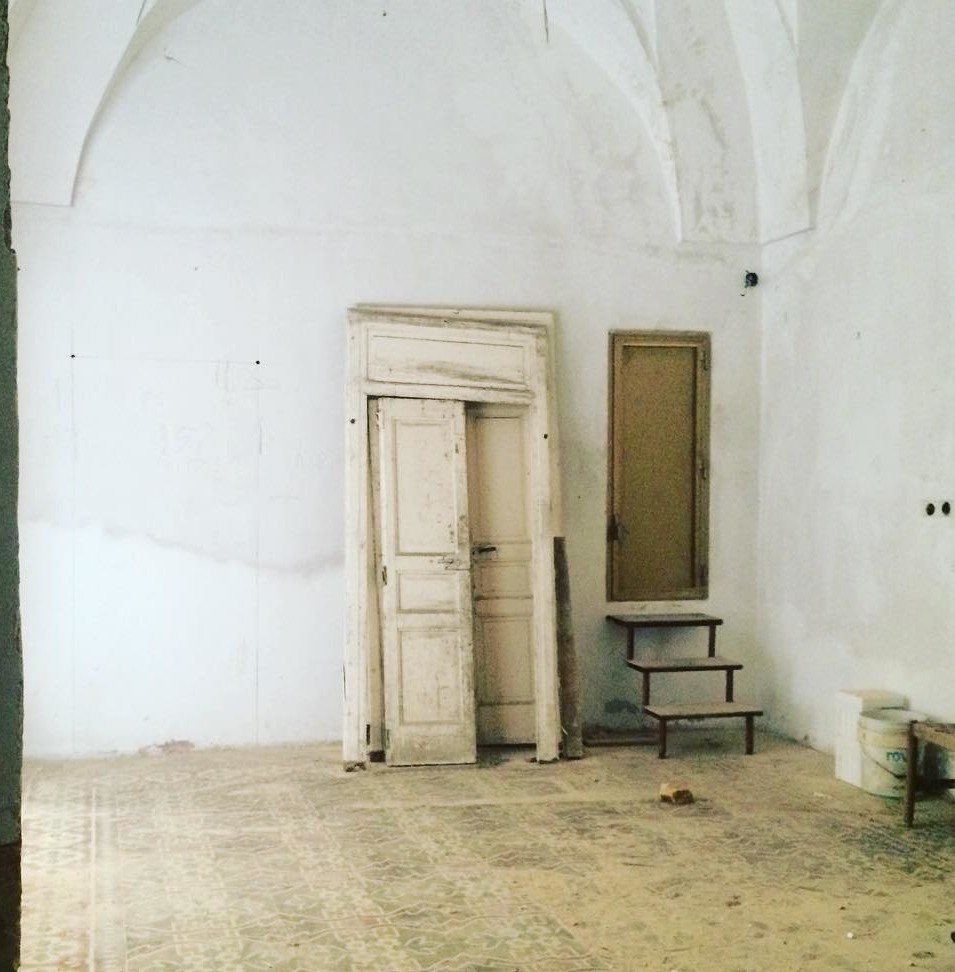“Chianca” in Salento is a slab of Apulian limestone.
Its characteristics of waterproofness and excellent resistance to wear and tear, have made this stone the queen of the roofs of Salento houses.
Largerly used on the top for the solar roof, the so-called “chiancatu”, the chianca has become the preferred material for the flat typical roofs of Lecce area since the early 1900s.
The chianca, thanks to its durability and easy availability in Lecce area, is often also found laid on the floor in little streets of historic centres and in homes courtyard or gardens.
The origin of the name is uncertain, although it seems to derive from the Latin “planca”, axis, table, slab.
The “chianche” are extracted from local Lecce stone quarries in blocks measuring 25x35x50 cm.
The slab has the characteristic parallel cut marks. The block from which it is obtained is in fact sawn on a semi-automatic bench with multiple oscillating parallel blades. From each block we obtain on average five or six slabs of the 50×35 cm classic format.
In old buildings however, it’s easy to find formats a little larger than the current 50x35cm and also you can find very variable thicknesses which derive from the manual processing of the ashlars also extracted by hand!

Look at the different thicknesses of the hand-worked chianche visible on these chianche recovered from an old roof
The thicknesses found on the market today vary from 3.5 cm to 10 cm, while larger formats are usually prepared to order.
The extracted ashlar may have a period of exposure to the air which favors the consolidation of the stone and therefore of its properties.
Today the production cycles are very rapid and involve the immediate use of the extracted ashlars, a factor that could negatively impact the quality of the chianca‘s performance, so it is advisable to ensure the correct and accurate installation of the solar paving.
Exposing the stone to the open air changes its appearance, without altering its qualities. The exposed surface is in fact covered in colonies of lichens which give it its characteristic greyish colour. Even the presence of impurities (in particular oxides) can lead to variations over time in the colouration, whether uniform or spotty, of the surface coating (brown, greenish or rusty colours).

Visible on the now greyish surface of this old hill are lichens and mosses stratified over time
Technically the chianche are placed on a layer of dry local sand called tufina, necessary for bedding. The slab is in fact simply placed on the substrate layer without the use of glues or other materials (great!). The installer completes the installation of the slab by beating it with a rubber or wooden hammer, until the correct slope of the individual slab is reached. A space of approximately 1 cm is left between the slabs for the sealing mortar, which in these parts is commonly called in dialect form “chiamentu” from the Latin *clavimentum precisely “closure”.
To date, the chianca constitutes almost the only covering material for the flat roofs of Salento buildings. The excellent behavior over time and the easy installation have made this local stone the undisputed leader of the terraces in Lecce area.
You will find very interesting in-depth articles at the links below. Enjoy the reading!
http://www.fondazioneterradotranto.it/2013/09/13/la-chianca/
